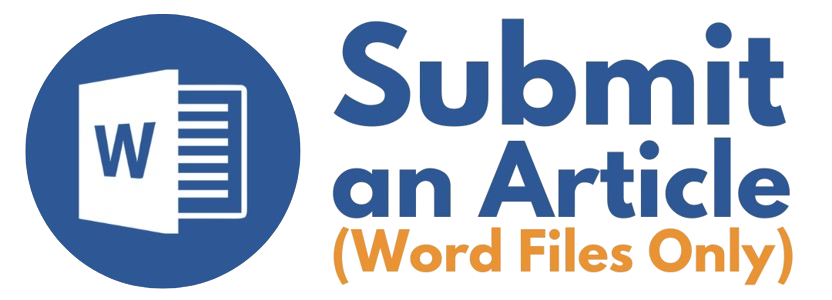THE TYPES AND THE FUNCTIONS OF THE FILLERS USED IN BARACK OBAMAS SPEECHES
(1) Sanata Dharma University, Yogyakarta
(*) Corresponding Author
Abstract
Keywords
Full Text:
PDFReferences
Baalen, I. V. (2001). Male and female language: Growing together?. Retrieved from http://www.let.leidenuniv.nl/hsl_shl/van%20Baalen.htm
Bickerton, D. (1995). Language and human behavior. Washington: University of Washington Press.
Bogdan, R. C. & Biklen, S. K. (1982). Qualitative research for education: An introduction to theory and methods. Boston: Allyn and Bacon, Inc.
Brown, G. & Yule, G. (1983). Discourse Analysis. London: Cambridge University Press.
Carter, R., Goddard, A., Reah, D., Sanger, K. & Bowring, M. (1997). Working with texts: A core book for language analysis. London: Routhledge.
Chaika, E. (2008). Language the social mirror. (4th ed.). Boston: Heinle.
Clarck, H. H. & Clarck, V. (1977). Psychology and language: An introduction to sociolinguistics. New York: Harcourt Brace Javanovich Inc.
Clark, H. H. & Fox Tree, J. E. (2002). Using uh and um in spontaneous speaking. Cognition, 84, 73111.
Corley, M. & Stewart, O. W. (2008). Hesitation disfluencies in spontaneous speech: The meaning of um. Language and Linguistics Compass, 2(4), 589602.
Dlugan, A. (2011, December 4). How to stop saying um, uh, and other filler words. Retrieved on September 12, 2016, from http://sixminutes. dlugan.com/stop-um-uh-filler-words/
Erten, S. (2014). Teaching fillers and students filler usage: A study conducted at ESOGU preparation school. International Journal of Teaching and Education, 2(3), 67-79.
Foss, D. J. & Hakes, D. T. (1978). Psycholinguistics: An introduction to the psychology of language. New Jersey: Prentice-Hall, Inc.
Hasling, J. (2006). The audience, the message, the speaker (7th ed.). Boston: Mc Graw-Hill.
Holmes, J. (2013). An introduction to sociolinguistics (4th ed.). New York: Routledge.
Hudson, R. A. (1980). Sociolinguistics (1st ed.). London: Cambridge University Press.
Jordan, D. J. (2001). Leadership in leisure service: Making a difference (2nd ed.). State College, PA: Venture Publishing, Inc.
Matthei, E. & Roeper, T. (1983). Understanding and producing speech. New York: Universe Books.
Rose, R. L. (1998). The communicative value of filled pauses in spontaneous speech (Thesis). Brimingham: Brimingham University. Retrieved on October 6, 2016, from http://filledpause.com/biblio/rose-1998
Santos, N. M. B., Alarcn, M. M. H. & Pablo, I. M. (2016). Fillers and the development of oral strategic competence in foreign language learning. Porta Linguarum, 191-201.
Schiffrin, D. (1978). Discourse makers. Cambridge: Cambridge University Press.
Starks, H. & Trinidad, S. B. (2007). Choose your method: A comparison of phenomenology, discourse analysis, and grounded theory. Qualitative Health Research, 17(10), 1372-1380.
Stenstrm, A. (1994). An Introduction to Spoken Interaction. London: Longman.
The White House. (2010, November 9). Indonesia's example to the world. Retrieved from https://www.youtube.com/watch?v=niDPBTbJqS0
The White House. (2013, February 14). President Obama on early childhood education. Retrieved from https://www.youtube.com/watch?v=ZQco0S cAJRg
The White House. (2015, November 13). The President delivers a statement on the attacks in Paris. Retrieved from https://www.youtube.com/watch?v= 4qYeXxGnSIA
Tottie, G. (2011). Uh and Um as sociolinguistic markers in British English. International Journal of Corpus Linguistics, 16(2), 173197.
Wood, L. A. & Kroger, R. O. (2000). Doing discourse analysis. Thousand Oaks, CA: Sage Publications.
Wu, J. (2001). A quantitative comparison of disfluencies types between native and non-native English speaker in spontaneous speech. Retrieved on October 10, 2016, from http://www.swarthmore.edu/SocSci/Linguistics/papers/ 2002/JeffWu.pdf
DOI: https://doi.org/10.24071/ijhs.v1i1.680
Refbacks
- There are currently no refbacks.
Copyright (c) 2017 Paulus Yanuar Kharismawan
Indexed and abstracted in:
IJHS Sinta 3 Certificate (S3 = Level 3)
International Journal of Humanity Studies (IJHS) has been nationally accredited Sinta 3 by the Ministry of Education, Culture, Research and Technology of the Republic of Indonesia based on the decree No. Surat Keputusan 158/E/KPT/2021. Validity for 5 years: Vol 4 No 1, 2020 till Vol 8 No 2, 2024

This work is licensed under CC BY-SA.
Creative Commons Attribution-ShareAlike 4.0 International License.
p-ISSN: 2597-470X (since 31 August 2017); e-ISSN: 2597-4718 (since 31 August 2017)
Notice: The opinions expressed in this publication are those of the authors. They do not purport to reflect the opinions or views of the editorial team or publishers.
International Journal of Humanity Studies (IJHS) is a scientific journal in English published twice a year, namely in September and March, by Sanata Dharma University, Yogyakarta, Indonesia.


















